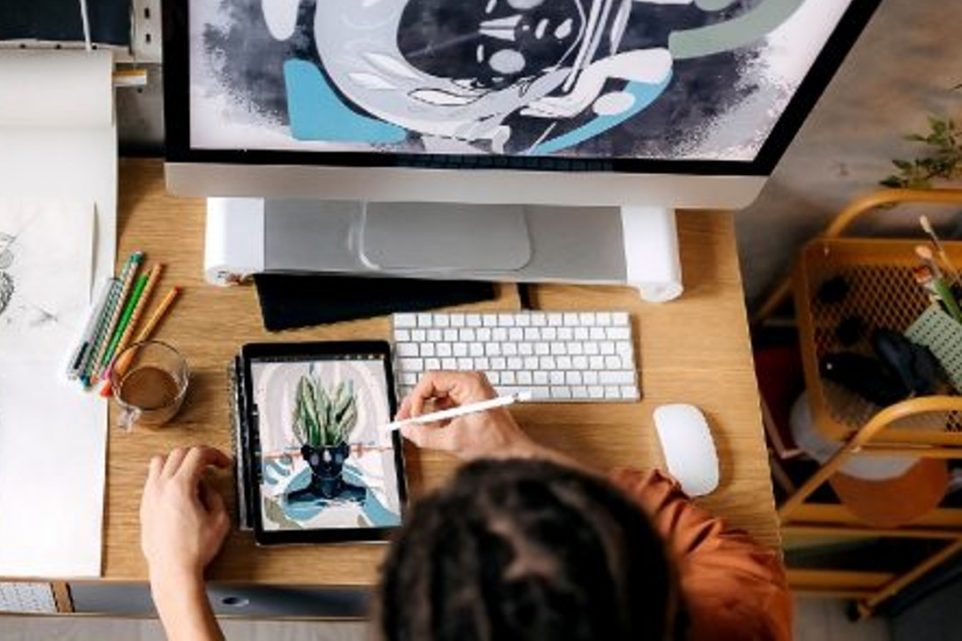How To Become a Graphic Designer: Tips and Equipment You’ll Need

Graphic design is a dynamic and creative field that offers countless opportunities for self-expression and professional growth. If you have a passion for visual communication and artistic design, pursuing a career as a graphic designer may be the perfect fit for you.
In this blog post, we will provide valuable tips and insights on how to become a graphic designer. From developing your skills and building a portfolio to acquiring the necessary equipment, we’ll guide you through the essential steps to embark on a successful graphic design journey.
Develop Your Skills
To become a graphic designer, it’s crucial to develop a strong foundation of skills in design principles, typography, color theory, and layout composition. Consider acquiring a drawing tablet and enrolling in design courses, either online or at a local college, to gain formal training and learn industry-standard techniques.
Practice regularly by working on personal projects, experimenting with different styles, and staying up to date with design trends. Seek feedback from peers, mentors, or online design communities to continuously improve your skills and receive constructive criticism.
Build Your Portfolio
Creating a compelling portfolio is essential to showcase your abilities and attract potential clients or employers. Start by selecting your best design pieces and organizing them in a visually appealing and coherent manner. Include a variety of projects that highlight your versatility and expertise across different design mediums, such as print, digital, or branding.
Consider creating case studies that explain your design process and problem-solving skills. Aim for a balance between quality and quantity, showcasing a range of projects that demonstrate your creativity, technical proficiency, and ability to meet client objectives.
Acquire Essential Equipment
As a graphic designer, having the right equipment is vital for producing high-quality work efficiently. While the specific requirements may vary depending on your focus area and preferred working style, there are several essential tools and equipment that most graphic designers need.
These include a powerful computer or laptop capable of handling design software, a reliable high-resolution monitor, a graphics tablet for digital drawing and illustration, a quality printer for proofing and presenting your work, and design software such as Adobe Creative Cloud (including Photoshop, Illustrator, and InDesign).
Invest in industry-standard tools that will enable you to execute your designs effectively and produce professional-quality work.
Stay Updated and Inspired
Graphic design is a constantly evolving field, and it’s essential to stay updated with the latest trends, techniques, and software advancements.
Follow design blogs, websites, and social media accounts of influential designers and design agencies to stay inspired and gain insights into industry developments.
Attend design conferences, workshops, and webinars to learn from industry experts and network with fellow designers. Continuous learning and seeking inspiration from various sources will help you grow as a designer and stay relevant in a competitive industry.
Gain Practical Experience
To enhance your skills and gain practical experience, seek opportunities to work on real-world design projects. This can involve freelance work, internships, or collaborations with local businesses, nonprofits, or student organizations.
Real-world projects provide invaluable experience in client communication, project management, and meeting deadlines. They also allow you to expand your portfolio and establish professional connections within the industry.
Be proactive in seeking opportunities and be willing to start small. Every project and client interaction will contribute to your growth as a graphic designer.
Trusted Insights from Artists
At Art Life Today, our passion for arts and crafts is at the heart of everything we do. We understand that the right tools and materials can make all the difference in your creative projects, so we take our responsibility as reviewers seriously. Our goal is to help you discover the best products that will inspire your creativity and bring your artistic visions to life.